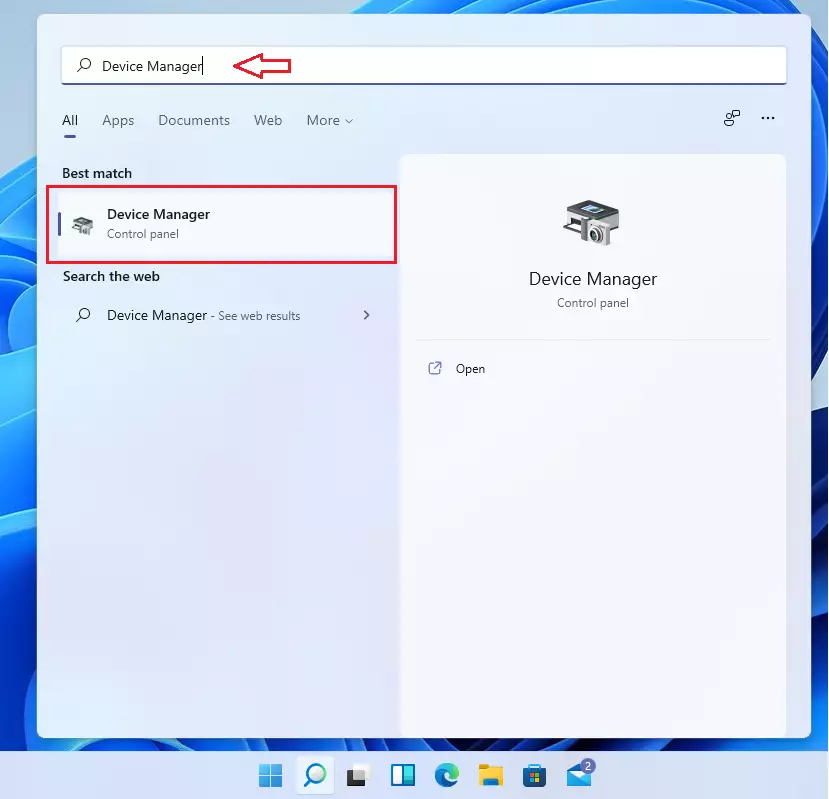This article explains how to resolve blank or black screen errors while using Windows 11.
If your Windows device experiences a display error, it may display a black or blank screen when you start it. If nothing is shown on the screen after powering on or logging in, it might indicate a problem with your display drivers or monitor.
We will go through troubleshooting steps to check your hardware and software to get your computer screen working again. There are many reasons why your computer screen might go blank, and addressing each item below may help.
- Connection problems with your monitor or screen
- Display adapter driver update issues
- Issues with recent system updates or installations
There are also many ways one can experience a black or blank screen on a Windows computer. Understanding how to troubleshoot each of the different ways and scenarios can help you resolve the issues quickly.
Here are some ways one can experience a blank screen.
- Before signing in to Windows
- After signing in to Windows
- After updating and restarting Windows
The steps below can also be completed with Windows in safe mode because that will start Windows with a limited set of files and drivers to help you narrow down the problems.
How to fix blank or black screen issues before signing into Windows 11
If you see a black or blank screen before you see the sign-in screen, try the following steps:
Press the CapsLock or NumLock key on your keyboard and check whether the status light for the key turns on. When the CapsLock or NumLock keys light up, the computer is on, but the screen or connection to the display isn’t working.
With the keyboard light on, press the Windows key + CTRL + SHIFT + B keys to restart or reset the display drivers.
If the keyboard light comes on and pressing the Windows key + CTRL + SHIFT + B keys doesn’t resolve the issues, press and hold the power button on your PC for 10 seconds to turn it off.
Then press and release the power button to turn your PC back on.
If you press the CapsLock or NumLock keys and the light doesn’t come on, hold the power button on your device for 10 seconds to turn it off, then unplug your adapter.
After 30 seconds, plug your adapter back in and restart your device.
If using a computer with a monitor, perform these steps:
- Make sure your monitor is plugged in and turned on
- Unplug the video cable from both your monitor and PC, then reconnect them firmly
- Try connecting to different video outputs on your PC
- For laptops, temporarily remove it from the docking station if it’s docked
How to fix a black or blank screen after signing into Windows 11
If you got to the sign-in screen but then your screen went black or blank, try the following steps:
Press the CapsLock or NumLock key on your keyboard and check whether the status light for the key turns on. When the CapsLock or NumLock keys light up, the computer is on, but the screen or connection to the display isn’t working.
With the keyboard light on, press the Windows key + CTRL + SHIFT + B keys to restart or reset the display drivers.
If there’s content or a cursor on the black or blank screen, try to restart the Windows Explorer process.
If you see a black or blank screen after an update, and Windows was operating correctly before that, the display adapter driver may be causing the screen issue.
- Sign in to Windows using safe mode
- Type device manager in the search box on the taskbar and select it from the results.

- Find Display adapters, select the arrow to expand it, then right-click the item under it and select Properties.
- Select the Driver tab, then select Roll Back Driver > Yes.
- Shut down your device, then turn your device back on.
That should help restore your computer display drivers.
If you still get a blank screen, perform a clean boot in Windows 11.
How to fix a blank or black screen after updating Windows 11 and rebooting
If you are updating and restarting your Windows device and you see dots moving in a small circle on a black screen, don’t worry.
Your computer is finishing the update, and your screen may be restored. However, if you don’t get a Windows screen after a while, you can perform some troubleshooting steps above to fix Windows.
That should do it!
Conclusion:
In summary, encountering a black or blank screen on your Windows 11 device can be frustrating, but you can take several troubleshooting steps. Here are the key takeaways:
- Check the monitor connectivity and power status.
- Utilize the keyboard shortcuts to reset display drivers.
- Restart the device if necessary to resolve initial display issues.
- Use safe mode for advanced troubleshooting and driver management.
- Consider rolling back driver updates if problems arise after updates.
- Perform a clean boot to eliminate software conflicts.
By following these steps, you can quickly diagnose and potentially resolve the blank or black screen issues on your Windows 11 computer.

Leave a Reply